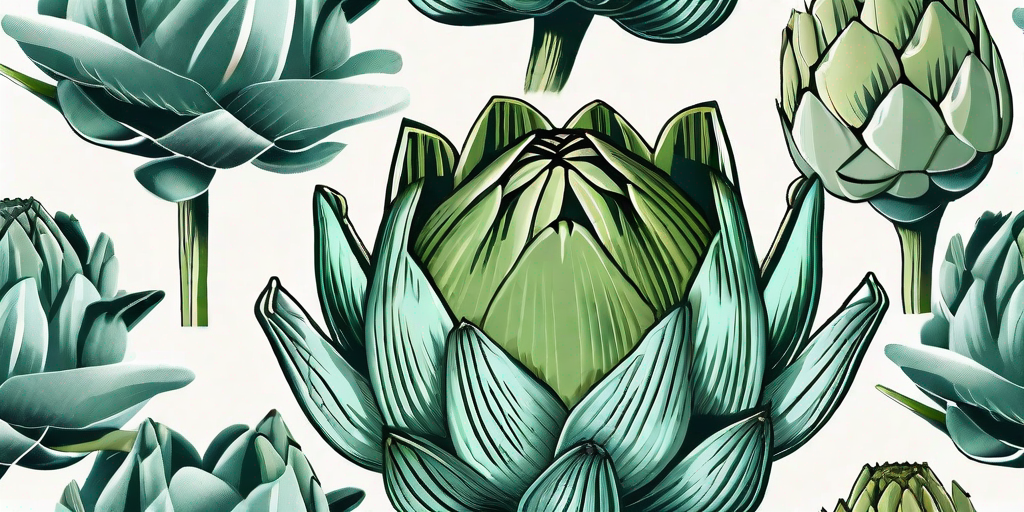
Artichokes, the thorny, leafy, green globes that grace our dinner tables, are a fascinating and diverse family of vegetables. They have been enjoyed by humans for centuries, and their unique flavor and texture make them a favorite among food connoisseurs. But did you know that there are actually many different types and varieties of artichokes? Let's dive into the world of artichokes and explore their rich diversity.
The Artichoke Family: A Brief Overview
The artichoke family, also known as the Asteraceae or Compositae family, is a large and diverse group of flowering plants. It includes over 23,000 species, making it one of the largest plant families on Earth. But don't worry, we won't be covering all 23,000 species in this article. We'll just focus on the ones you're most likely to encounter at your local grocery store or farmers market.
Artichokes belong to the genus Cynara, which includes about 10 species. The most common species is Cynara cardunculus, which includes the globe artichoke and the cardoon. Other species include Cynara humilis, a wild artichoke found in the Mediterranean region, and Cynara scolymus, another type of globe artichoke.
Globe Artichokes
Globe artichokes are the most common type of artichoke. They are large, round, and have a dense arrangement of leaves. The leaves are edible, as is the heart, which is the fleshy base of the artichoke. Globe artichokes have a mild, slightly sweet flavor and a tender texture.
There are several varieties of globe artichokes, including the Green Globe, Imperial Star, and Violetto. The Green Globe is the most common variety and is known for its large size and deep green color. The Imperial Star is a smaller, more compact variety with a mild flavor. The Violetto is an Italian variety with a purple color and a slightly sweeter flavor.
Cardoons
Cardoons are a close relative of the globe artichoke. They look like a cross between an artichoke and a celery stalk, with long, thick stems and a small, artichoke-like head. Cardoons have a slightly bitter flavor and a crunchy texture.
Cardoons are not as common as globe artichokes, but they are gaining popularity in the culinary world. They can be eaten raw, cooked, or pickled, and they are often used in Mediterranean cuisine.
How to Choose and Prepare Artichokes
Choosing and preparing artichokes can be a bit intimidating if you're not familiar with them. But don't worry, we're here to help. Here are some tips to get you started.
Choosing Artichokes
When choosing artichokes, look for ones that are heavy for their size and have tightly packed leaves. The leaves should be a vibrant green color, with no signs of browning or wilting. If the artichoke has a stem, it should be firm and not shriveled.
Size doesn't necessarily indicate quality, so don't be swayed by the biggest artichoke on the shelf. Instead, focus on the condition of the leaves and stem.
Preparing Artichokes
Preparing artichokes involves removing the tough outer leaves, trimming the stem and top, and scooping out the fuzzy choke in the center. It's a bit of work, but the delicious results are worth it.
Once the artichoke is prepared, it can be boiled, steamed, grilled, or roasted. The leaves can be pulled off and eaten one by one, and the heart can be cut into slices and eaten as is or used in recipes.
FAQs
Are artichokes good for you?
Yes, artichokes are very good for you. They are low in calories and high in fiber, vitamin C, and other nutrients. They also contain antioxidants, which can help protect your body from damage by free radicals.
Can you eat the whole artichoke?
No, not all parts of the artichoke are edible. The leaves and heart are edible, but the tough outer leaves and the fuzzy choke in the center should be removed before eating.
How do you store artichokes?
Artichokes should be stored in the refrigerator. They can be kept in a plastic bag to prevent them from drying out, but the bag should be left open to allow for air circulation.
Conclusion
Artichokes are a fascinating and diverse family of vegetables. Whether you're a fan of the common globe artichoke or you're curious about the lesser-known cardoon, there's an artichoke variety out there for you. So the next time you're at the grocery store or farmers market, why not pick up an artichoke and give it a try? You might just find a new favorite vegetable.











